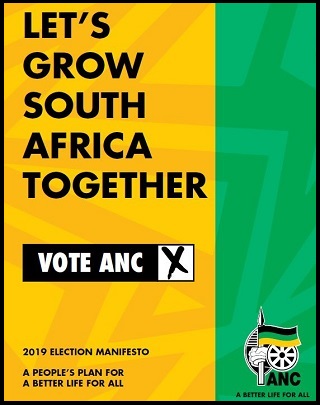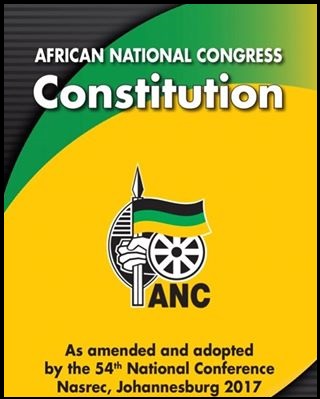On Monday 7 September 2015 we gathered in Bhisho to commemorate one of the darkest moments in the turbulent period that preceded the achievement of democracy in South Africa.
At that stage, in September 1992, we knew that freedom was inevitable. But we did not know how long it would take to achieve it – and at what cost. Just three months before, 45 people had been killed in Boipatong by agents of the apartheid regime and the ANC had withdrew from negotiations and was demanding that the National Party government end the covert war against our people and create the conditions for free political activity.
This demand was particularly important for the people of the then Ciskei, who were suffering at the hands of the repressive regime of Brigadier Oupa Gqozo whom would not allow any free political activity in Ciskei. He was an unpopular ruler, propped up by a corrupt system that was decaying and surrounded by shady security advisors. His security apparatus – which were nothing more than an extension of the apartheid regime’s security apparatus – brutally suppressed any dissent.
The ANC demanded that FW De Klerk remove Gqozo from office and replace him with an interim administrator until the conclusion of constitutional negotiations. As more and more of our people were detained and beaten, the leadership of the ANC in the Border Region decided to have a campaign of mass action to allow us to operate freely in the Ciskei. This campaign included marches to Bhisho.
In August 1992, the ANC held a successful March to Bhisho attended by thousands of our people which was facilitated by the National Peace Accord. After that march we vowed to return to Bhisho and stay there until Brigadier Oupa Gqozo resigned. In our minds we were going to march to Bhisho and stage a sit-in at his very seat of power.
The build-up to the march on 7 September 1992 was tense and we were initialy denied permission to march. Our lawyers tried to get permission through the courts and the National Peace Accord frantically tried to negotiate with all parties to allow the march to go on. On the night before the march, permission was finally granted to march from King Williams Town to the Bhisho Stadium.
There were several prominent leaders taking part in the march, including Comrades Chris Hani, Ronnie Kasrils, Tokyo Sexwale and Steve Tshwete. I recall addressing the marchers that were gathering in the morning at King Williams Town Stadium. I said that we were marching peacefully to Bhisho to protest against the lack of free political activity and the harassment of the people of Ciskei. I said we were marching for basic rights enjoyed by all free people across the world.
As we proceeded towards Bhisho, a group of people came to report that they had returned from the border post where there were rolls of razor wire blocking the marchers entering into Bhisho. The razor wire had been placed in such a way that the marchers would be led into the stadium. It was also reported that there was a gap in the fence at the stadium through which people could have access into Bhisho.
While we were marching, we decided that a group led by Chris Hani and Ronnie Kasrils would lead marchers into the stadium and through the gap in the fence into Bhisho. I were to lead the rest of the marchers up the road to the razor wire, where we would negotiate for the march to proceed into Bhisho.
Just as we arrived at the razor wire, the shooting began. Then we heard explosions.
We all dropped to the ground. Then there was a short pause before a second volley of fire started. Several people in my immediate vicinity were shot. The shooting continued for a minute or two. When the shooting ended, 28 people were dead and many more were injured. We covered the bodies of the deceased and tried to get the injured to hospital.
We held a vigil at the border that night and remained at the scene of the massacre until President Nelson Mandela and Archbishop Desmond Tutu arrived the next morning. We were shocked and outraged. There had been no provocation by the marchers, who were all unarmed and controlled by marshals. The Ciskei security forces had made no attempt to warn the marchers before shooting, nor did they attempt to exercise any form of crowd control.
On Monday 7 September 2015 we remembered the 28 people that lost their lives and the many more who were injured. We paid tribute the people who wanted nothing more than the right to be free. We honoured their memories by reaffirming our commitment to achieve the kind of South Africa for which they fought. We gathered to once again extend our deepest sympathies to their families for the anguish, pain and deprivation that they have suffered.
When it is our time to leave this earth, what is that we will have to say to those who lost their lives on that day? We will tell them about the triumph of democracy. We would tell them about the day the guns fell silent. We would tell them that thanks to their struggles, and the struggles of millions of South Africans, Brigadier Oupa Gqozo and the bantustan of Ciskei were swept away at the stroke of a pen. We would tell them about our Constitution, which guarantees the right of all to freedom of expression, freedom of association and the right to peaceful protest.
We would tell them about the rural homes that now have electricity. About the millions of people who now have proper houses, with clean water and proper sanitation. About the new clinics that have been opened and the schools that have been built. We would tell them about a country that is united, democratic, vibrant and advancing towards a better future.
23 years after that fatal day, we know that the road is long and that we have much further to travel. We know that many of our people still live in poverty. Millions are unemployed. We know that many young people do not have the skills they need. We know that many people in rural areas still do not have access to land. Many in urban areas do not have houses or basic amenities.
As we remember those who sacrificed their lives for our freedom, we must pledge ourselves to continue their struggle. For they were marching not only for the right to organise and to speak and to protest. They were marching not only for the right to vote and be treated as equals before the law. They were marching to end poverty, to end inequality. They were marching for skills and work and economic opportunities.
They were marching for a radically different society that truly belonged to all South Africans, black and white. They sought a society in which a black child would be born with all the rights, opportunities and material security as any white child. They sought a society in which everyone would be free to pursue their dreams and realise their potential.
23 years later, we must ask ourselves whether we are on course to realise the society for which they sacrificed their lives. We must ask ourselves whether, when our time comes, we will be able to report honestly and faithfully that we have indeed done everything in our power to build a united, non-racial, non-sexist, democratic and prosperous South Africa.
As we remember those who fell at this place on that dark, dark day in September 1992, let us commit ourselves to completing the march that they started.
Let us complete the march to freedom.
Comrade Cyril Ramaphosa is the ANC Deputy President and Deputy President of the Republic of South Africa




